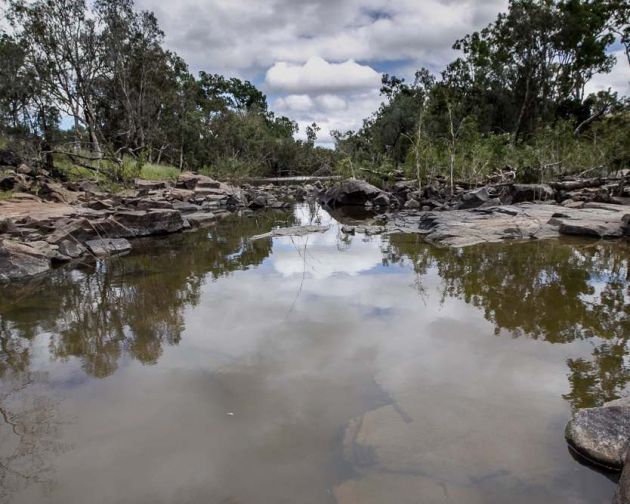Fletcherview About Fletcherview
About Fletcherview
- Aboriginal and Torres Strait Islander in Marine Science
- Courses
- Future Students
- Current Students
- Research and Teaching
- Partners and Community
- About JCU
- Reputation and Experience
- Celebrating 50 Years
- Academy
- Anthropological Laboratory for Tropical Audiovisual Research (ALTAR)
- Anton Breinl Research Centre
- Agriculture Technology and Adoption Centre (AgTAC)
- Living on Campus
- How to apply
- Advanced Analytical Centre
- Alumni
- AMHHEC
- Aquaculture Solutions
- AusAsian Mental Health Research Group
- ARCSTA
- Area 61
- Association of Australian University Secretaries
- Australian Lions Stinger Research
- Australian Tropical Herbarium
- Australian Quantum & Classical Transport Physics Group
- Boating and Diving
- JCU-CSIRO Partnership
- Employability Edge
- Clinical Psychedelic Research Lab
- Centre for Tropical Biosecurity
- Career Ready Plan
- Careers at JCU
- Careers and Employability
- Chancellery
- Centre for Tropical Bioinformatics and Molecular Biology
- CITBA
- CMT
- CASE
- College of Business, Law and Governance
- College of Healthcare Sciences
- College of Medicine and Dentistry
- College of Science and Engineering
- CPHMVS
- Centre for Disaster Solutions
- CSTFA
- Cyber Security Hub
- Cyclone Testing Station
- The Centre for Disaster Studies
- Daintree Rainforest Observatory
- Defence
- Discover Nature at JCU
- Research Division
- Services and Resources Division
- Education Division
- Elite Athletes
- eResearch
- Environmental Research Complex [ERC]
- Estate
- Fletcherview
- Foundation for Australian Literary Studies
- Gender Equity Action and Research
- General Practice and Rural Medicine
- JCU Orientation
- Give to JCU
- Governance
- Art of Academic Writing
- Art of Academic Editing
- Graduate Research School
- Graduation
- Indigenous Education and Research Centre
- Indigenous Engagement
- Indigenous Legal Needs Project
- Inherent Requirements
- IsoTropics Geochemistry Lab
- IT Services
- International Students
- Research and Innovation Services
- JCU Eduquarium
- JCU Heroes Programs
- JCU Webinars
- JCU Events
- JCU Global Experience
- JCU Ideas Lab
- JCU Job Ready
- JCU Motorsports
- JCU Prizes
- JCU Sport
- JCU Turtle Health Research
- Language and Culture Research Centre
- CEE
- LearnJCU
- Library
- Mabo Decision: 30 years on
- MARF
- Marine Geophysics Laboratory
- New students
- Off-Campus Students
- Office of the Vice Chancellor and President
- Virtual Open Day
- Orpheus
- Open Day
- Outstanding Alumni
- Parents and Partners
- Pathways to university
- Pharmacy Full Scope
- Planning for your future
- Placements
- Policy
- PAHL
- Publications
- Professional Experience Placement
- Queensland Research Centre for Peripheral Vascular Disease
- Rapid Assessment Unit
- RDIM
- Researcher Development Portal
- Roderick Centre for Australian Literature and Creative Writing
- Safety and Wellbeing
- Scholarships
- Contextual Science for Tropical Coastal Ecosystems
- Staff
- State of the Tropics
- Strategic Procurement
- Student Equity and Wellbeing
- Student profiles
- SWIRLnet
- TARL
- TESS
- TREAD
- TropEco for Staff and Students
- TQ Maths Hub
- TUDLab
- Unicare Centre and Unicampus Kids
- UAV
- VAVS Home
- Work Health and Safety
- WHOCC for Vector-borne & NTDs
- Media
- Copyright and Terms of Use
- Australian Institute of Tropical Health & Medicine
- Pay review
With an iconic landscape and unique environment, there's so much to discover in the Queensland outback at Fletcherview station as a student or researcher.
Fletcherview runs approximately 600 head of high-grade Brahman cattle: 300 breeder-aged females and 300 yearling cattle. For over 25 years we have been breeding the herd to be genetically similar, meaning less variation in genetic performance and better results from research studies.
Bred with impeccable temperaments, the cattle are ideal for helping support research, learning and teaching. Our main operation is to supply these livestock to the James Cook University College of Public Health, Medical & Veterinary Sciences. We ensure our cattle are representative of the Northern Australian beef industry and all research on our station is transparent to the rest of the industry.
Country
Fletcherview occupies 1960 hectares of land, across two main country types: black and red basalt soils, and alluvial river flats. The basalt country features native grasses like black spear, kangaroo, desert blue, golden beard, flinders, and numerous others, as well as introduced species like stylos buffel and urochloa. The alluvial country is mostly inhabited by introduced grasses such as buffel, urochloa, stylos and some leucaena.
The station hugs a 2.5 kilometre length of the Burdekin River, one of the largest river systems in Queensland. You will also find three major creek systems (Lolworth Creek, Pandanus Creek and Hann Creek) on the property to analyse and explore.

Like much of regional Queensland, our research station typically experiences a wet and dry season each year. The wet season usually begins in early January and continues until April. During this time, Fletcherview receives most of its annual rainfall, with an average of 600mm per year. The average temperature is 30 degrees Celsius.
Fletcherview is a fully operational outback cattle station, but its location in the dry Tropics, two hours west of Townsville, nurtures a huge variety of flora and fauna. Across open savannah woodland, dry rainforest, lava flows, three creek systems and the Burdekin River, hundreds of species of plants, birds, fish, insects and mammals thrive in the area.